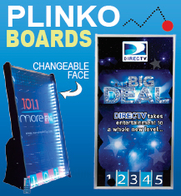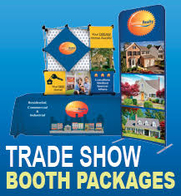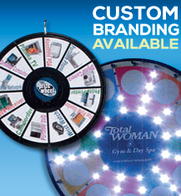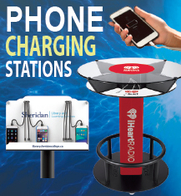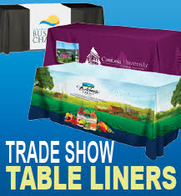 Hello class! Who’s interested in learning how to rapidly grow their business? How about increasing revenue? Networking is one of those arts that are often overlooked, yet it is a great, cheap and easy way to find new prospects, partners and vendors.
Hello class! Who’s interested in learning how to rapidly grow their business? How about increasing revenue? Networking is one of those arts that are often overlooked, yet it is a great, cheap and easy way to find new prospects, partners and vendors.
Now that I got your attention, let’s start exploring how networking can help deliver those results. I imagine that many of you are wondering – “Why do I need to learn how to network? I go to events, shake hands, chat a bit and get a business card, then move onto the next contact. How hard is that?” Does that sound familiar? If you said yes, then pay close attention to this lesson to learn how to network effectively and build business relationships that turn into “referral machines” for you!
Networking skills can be applied to any event you attend as long you are not alone and find a way to communicate with other people! But this lesson will have a strong focus on networking opportunities at trade shows, using the Exhibitor Show for some examples.
What are some examples of networking opportunities available at the Exhibitor Show and where do you find them?
Start by looking for networking events pre-show; there is a page on the show site titled “Networking Opportunities and Orientation” where you can find a list of events. When you are at the show look in the Show Guide; be sure to add the events you want to attend to your calendar and practice the skills learned in this lesson and homework! When attending other shows, the show site typically always has a list of networking events, but the page may have a different title than the Exhibitor Show’s event listing.
Some events offered at this show are listed on the website as: Opening Reception, Welcome Reception, Dinner With Strangers, The Square and Peer2PeerRoundtables. Don’t forget to be on the lookout for exhibitor sponsored events as well; invites may be received by postal mail, email or at exhibitor booths. Now that you know where to find networking events it’s time to learn about networking strategies; to fine tune the time you spend networking in the effort of reaching the most targeted contacts.
Why Network?
The simplest way to approach networking is with 2 primary goals in mind:
- Get to know people; ASK questions about their business and how you may be able to help them.
- Get them to know you; TELL them about your business and how they may be able to help you.
TIP: Keep the 80/20 rule in mind; listen 80% of the time and only talk 20% of the time. You’ll learn a lot about the contacts; which can help you determine whether they are a qualified contact to build a relationship with.
As you can see, the goal of networking is to build relationships, NOT trying to sell and grab as many business cards as possible by the end of the event! When you take the focus away from trying to get business from the contacts you meet and focus on building a relationship they are more responsive and over time they will start to become “referral machines” for you and/or “open doors” for developing business opportunities. Keep in mind that it’s important for you to return the good will by giving referrals as well. Key reasons for building relationships through networking are:
- Partnering your products/service offerings
- Referring business contacts and opportunities to each other
- Asking for advice
- Exchanging Ideas
HOMEWORK
Create a Networking Plan
Would you go into a business meeting or conduct a presentation without properly preparing beforehand and just leave things to chance? No. Then why would you leave your networking opportunities to chance? When you have formalized a networking plan and strategy you will reach key contacts rapidly and start attending targeted events; just like you should be exhibiting at targeted trade shows to meet key prospects!
For your homework you will be creating a Networking Plan. Follow the Eight Easy to Apply Networking Strategy Steps below to get started.
Step 1
When considering to add an event to your Networking Plan take ample time to learn about the event’s focus and who will be there to pre-determine whether the event fits the targeted type of relationships that will help your business. Ask yourself:
- What will occur at the event?
- What type of people will attend this event?
- Are these the type of people whose business I can help and whom can help my business?
- Ask if a list of attendees or companies is available. If yes, review the list.
Step 2
Once you have determined targeted events to attend, create a list of people you want to meet at each event to build relationships with. This can range from general items such as Title, Company, Industry, etc. or can be specific names of contacts.
Step 3
Create and practice a pre-determined list of open ended questions to ask for learning more information about the contacts you meet, below is a Top 10 list of examples you can use to get started:
- What does your company do?
- What industry do you serve?
- Who are your key prospects/clients?
- What type of products do you have?
- What is your competitive advantage?
- What got you started in this industry/job?
- What do you enjoy most about the profession you are in?
- What trends do you foresee in your industry/profession?
- What marketing/sales activities have you found to be the most successful for your business?
- Can you refer me to someone that does ___?
Tip: Use the phrase “tell me more” often, this will indicate interest
Step 4
Have a list of example questions ready that you can use to ask for referrals to contacts you would like to meet at the event.
- Is there anyone here you can refer me to who needs a ____type of product/service?
- I was looking to meet with ____, can you point me in their direction?
- Do you have any suggestions for who I can speak with about ____?
- One of my goals for the evening is to meet with someone who does ____, are you aware of anyone here that does ____you can introduce me to?
Step 5
Find ways to make introductions for other people. Create a list of statements you can use when offering an introduction. Below is a list of examples.
- Let’s “work the room” together and see if there is anyone here I can introduce you to.
- Your product/service is a good fit for my colleague ____let me introduce you to him/her.
- The speaker was very interesting, let’s go introduce ourselves, I want to tell him/her about your fascinating product/service.
- Let me introduce you to an associate of mine.
- My colleague ____is here, let’s go say “hi” and I will introduce you.
Step 6
After Making Contacts – Evaluate Them
Very simply ask yourself; can you help them AND can they help you? When considering if this contact can help you, remember that the purpose of the relationship should not be to get their business, but to get business from everyone they know!
….If the answer is “Yes” then go build a relationship with this contact!
Step 7
After Determining the Valuable Contacts – Build a Relationship
- Learn more about the contact(s) business, products and personal interests; consider setting up an initial in-person appointment for about 1 hour, or via phone if that works better
- Further educate them on your company, products and your personal interests
- Touch base often; try getting together in person whenever possible
- After you have built a relationship and developed a level of trust, start introducing them to other appropriate contacts of yours; in turn they are likely to do the same
- When looking for referrals, vendor recommendations and general business advice turn to your base of contacts!
Step 8
Relationship Maintenance
Just like in your personal life, maintaining a business relationship takes work too; keep these helpful tips in mind, so a contact doesn’t “break up” with you!
- Touch base often, particularly with your “most valuable” contacts; go to lunch or dinner, attend
an event together, or simply pick up the phone and chat a bit! - Check in with all contacts periodically, to maintain the relationship; even a simple quick email or card will do the trick!
- Prioritize contacts every so often; as your contact base grows, evaluate which contacts you should be in touch with frequently, or just periodically
You will come to find that some of your contacts will turn into some of your closest and long term friendships! For example, a contact I met many years ago on a Press Tour is now affectionately known as my “Step Dad”; he was as proud as my real dad watching me get married several years ago! I can turn to him, as well as my other base of valuable contacts when I need business advice, vendor recommendations, or even something as simple as a good restaurant suggestion in a particular city!
Using the methods I have shared with you in this lesson have been the cornerstone in building TradeShow Teacher; the contacts I have built relationships with send me a stream of steady referrals because I did not spend time “selling them” on using my services. You may find it surprising to learn that many of my most valuable contacts have never been customers. However, I take the time to help them and they in turn take the time to help me by referring business to me. As a matter of fact I just received 2 good referrals today. One for a Booth Staff Training program and one to present a seminar on Networking Skills.
Jonathan Edelman provides helpful advice about trade show strategies. With years of experience in the trenches, he is an expert on booth displays, follow up techniques, and using trade show marketing strategies to boost revenue.











